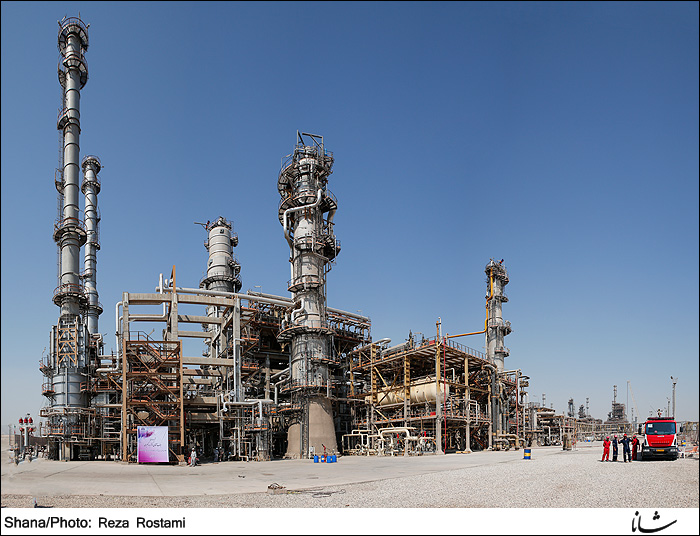The refinery prides itself not only for rendering the country needless of gasoline import, but for production of quality petrol, helping Iran join the club of gasoline exporters in the world.
In the first years of the Islamic Revolution the country could supply the domestic need for petrol but in the 80s demand grew and Iran had to import fuel. Since then, Iran has always remained a net importer of the strategic commodity.
In the 90s, demand grew even higher and the country needed to import an average of 10 million liters of gasoline per day. In 2006, the country imported 25.5 ml/d on average.
2006 was marked as the year the country imported the greatest amount of gasoline. There were days that imports set the record of 30 ml a day in that year.
However, in the following years, imports diminished and fell to an average of 10.3 ml/d in 2010, the year of targeted subsidies in Iran.
The county's imports stood at an average of 6.3ml/d in 2011 but grew to 8.1ml/d in the following year.
Gasoline imports stood at 5.3ml/d in 2013, the drop in gasoline imports continued in the following years, but self-sufficiency was never realized during the years.
Iran is to start operating the first phase of Persian Gulf Star Refinery during the second half of the next Iranian calendar year which begins on March 21.
The refinery will start producing high-octane gasoline, said Deputy Petroleum Minister Abbas Kazemi in an interview with Shana on National Iranian Oil Refining and Distribution Company (NIOPDC)'s performance during the current Iranian calendar year.
The official, who is also the managing-director of NIOPDC, said the company boosted distribution of euro-4 petrol and gasoil in major cities of the country.
"Supply of clean fuels will boost from 8 cities to 20 major cities in the next Iranian year," Kazemi said.
For the first time in Iran, NIOPDC managed to secure sustainable export of petroleum products during the current year and boosted gasoline production to at least 60 million liters per day, he said.
Iran also managed to export gasoil and liquefied gas that was processed by Iranian refineries during the current year.
Furthermore, the company launched the isomerization unit of Isfahan refinery in September with the production capacity of 7 million liters of euro-4 gasoline per day. The capacity allows Isfahan to supply the fuel for nearby cities as well as Shiraz and Ahvaz.
The NIOPDC chief further said a development project in Lavan Refinery will become operational by March 2016 and another project in Bandar Abbas Refinery will come online by spring with the production capacity of 3 ml/d of gasoline of which nearly half will be supplied with euro-4 standards.
Iran currently imports 5 ml/d of gasoline to meet its growing demand. The startup of Persian Gulf Star Refinery would let Iran even export 3 to 4 ml/d of gasoline.
The project, Iran's first gas condensate refinery, has so far received €1.6b for its completion.
It will consume 360,000 barrels of gas condensate on a daily basis once fully operational.


Your Comment